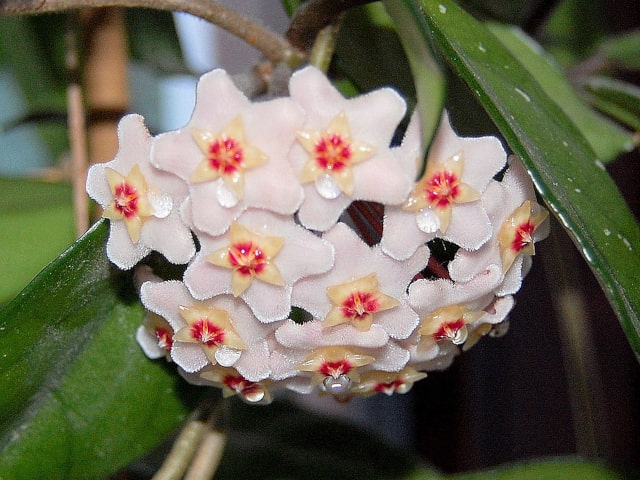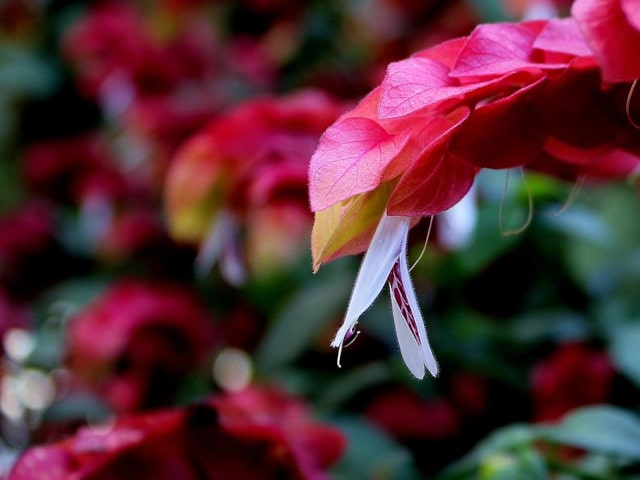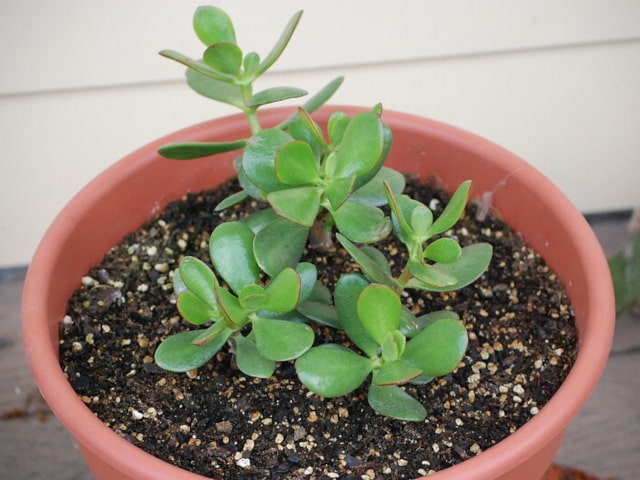
Scindapsus Treubii, also known as a Moonlight or Sterling Silver plant, is a beautiful tropical trailing plant known for its silver-green leaves. Native to tropical Asia, this plant can make a great addition to your home. It is also not difficult to grow, and it is a generally hardy plant, so you should not have issues with it, as long as you provide it with basic care that it requires.
It is always best to grow these plants indoors, because you cannot adjust the amount of sunlight they receive in the garden. Too much sun can burn their leaves, so growing Scindapsus Treubii in hanging baskets in the home or by a window is a good option.
Keep in mind that Scindapsus Treubii is toxic to pets, so keep them out of the reach. Growing your Scindapsus Treubii Moonlight plant in hanging baskets is the best way to prevent your pets from reaching them.
Scindapsus Treubii Moonlight Care Requirements
It is important to understand that Scindapsus Treubii Moonlight plants are not particularly demanding when it comes to soil. It will thrive in any potting mix, provided that it is well-draining. You can also add some perlite to increase the drainage. This is important, because this plant cannot withstand to sit in water. Soggy soil can be very dangerous to Scindapsus Treubii, so make sure to find the soil that drains well.
Another thing to keep in mind is that this plant is a climber. It takes its nutrients from other plants in the vicinity, so you can add some organic matter to the soil to help Scindapsus Treubii thrive. Some compost can be very beneficial for this plant.
When adding perlite, compost or other organic matter, such as bark, always make sure to do it in equal parts. This will create a favorable mixture for potting.
Scindapsus Treubii prefers bright but indirect light. It will do great in rooms that has a lot of filtered light. Another good option is an east-facing window. These plants can survive some direct sunlight, but make sure not to keep it in direct sun for long periods of time. Similarly, make sure that the plant is not in darkness for long periods.
When it comes to watering, it is crucial not to overwater your Scindapsus Treubii Moonlight plant. The pot has to include good drainage holes. This, coupled with the soil that drains well, will ensure that the plant never sits in water. Soggy soil can cause root rot quickly, which is dangerous for the plant.
Keep in mind that Scindapsus Treubii can do well without watering for some time, but you should not underwater it. You will know that you are underwatering when the leaves start curling. To avoid this, water regularly, but make sure to wait until the top two inches of soil are dried out. Only after this, water your plant again.
Temperature requirements for this plant are not as strict as you may think. While Scindapsus Treubii Moonlight comes from the rainforests of Asia, it doesn't necessarily mean that it can only thrive in warm weather. In fact, ideal temperatures for this plant are between 65 and 75 degrees F. If it's kept in too hot temperatures for prolonged periods of time, it will start to wilt. To prevent this, make sure not to keep it on a spot that gets too warm.
Another interesting thing is that Scindapsus Treubii Moonlight can tolerate cool temperatures relatively well. It can do fine by a window during the winter, so no need to move it around your apartment. The only thing you need to avoid are freezing temperatures. These plants will get damaged if they are kept at temperatures below freezing, so keep that in mind.
Scindapsus Treubii doesn't have particular humidity requirements. It can survive well when the humidity is between 40% and 60%, which are conditions present in most homes. Its ideal humidity is around 60%, but you don't need to worry about it if your home is not as humid. You will not need to increase humidity around your plant in order to make it thrive.
However, if the humidity in your home is kind of low, it would be beneficial to mist your plant with water. This will keep it moist, and will also prevent the accumulation of mineral deposits on its leaves. You will know that the plant needs more moisture is if the leaves are yellowing and crispy.
Repotting and Propagation
Keep in mind that Scindapsus Treubii is a slow grower. It means that you will probably not need to repot it often. At the same time, the slow growth means that you might need to wait for a while after propagating this plant for it to grow properly. So, patience is the key for growing these plants.
When it comes to repotting, you will probably need to do it once in a few years. It will depend on many factors, including the growing conditions in your home. In any case, chances are that you will only need to repot it once in 2 to 3 years.
Repotting is not particularly difficult, and the best way to do it is through stem cuttings. Make sure to use soil propagation and not water propagation, because the roots will not grow as quickly or as strongly in the water. Also, rooting in water will cause a shock once the plant is placed in the soil. Because of this, propagating in the soil is recommended.
It is best to do propagation during the spring. To propagate, simply choose a stem on the adult plant that has at least one node. Cut right below the node using sterilized knife or scissors. Make sure to remove the bottom leaves from the cutting, but always leave at least one to two leaves at the top.
Next, plant your cutting. Use a cup filled with a potting mix of sphagnum moss and perlite. Make sure that the sphagnum is moist. Place the cutting in the soil with the nodes-side down. Plant it a few inches deep. To speed up the rooting process, you may dip the cut end in a rooting hormone before planting.
Cover the cup with a plastic bag to increase the humidity. Make sure to keep the moss damp as the new plant grows. Place the cup in a warm and bright area. After a few weeks, check if the roots have developed. You should wait for several months until the plant is strong enough to be transplanted into the soil.
When you transplant it, water it and make sure to water again only after the soil has dried out. After this, take care of your new plant in a regular way. Remember, Scindapsus Treubii are slow growers so it might be months or around a half of a year until you see new leaves developing.




0 Comments